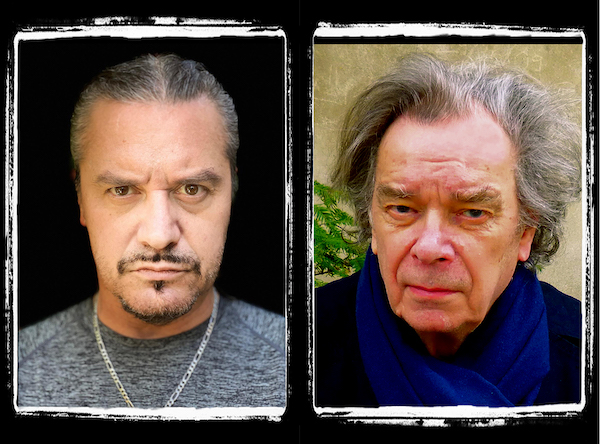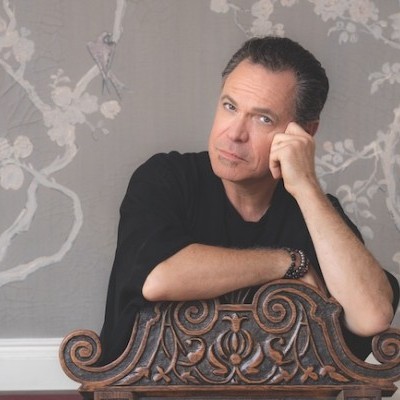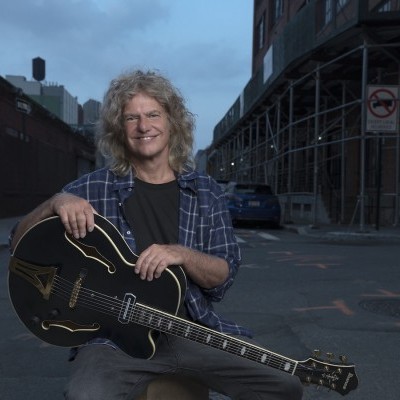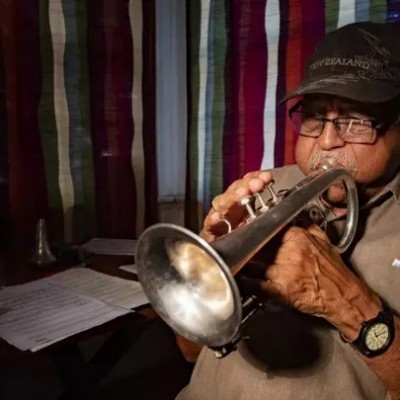Oct 28, 2025 10:47 AM
In Memoriam: Jack DeJohnette, 1942–2025
Jack DeJohnette, a bold and resourceful drummer and NEA Jazz Master who forged a unique vocabulary on the kit over his…

Vocalist Mike Patton (left) and French composer Jean-Claude Vannier clicked at a 2011 Serge Gainsbourg tribute concert. Their album, Corpse Flower, is due out Sept. 13 on the Ipecac imprint.
(Photo: Courtesy Ipecac)Mike Patton’s the ultimate shapeshifter, a vocalist with the uncanny ability to move among styles, including rock singing, crooning, rapping, opera, death growls, falsetto and some that have yet to be defined—and he’s known to combine several techniques within a single verse. He developed all these skills—and his six-octave range—by instinct and determination, rather than formal training.
“I’m a self-taught kind of weirdo, and whatever it is that I’ve learned over the years, I’ve done by listening and by working on the job, and making a lot of mistakes, whether they’re recorded or not,” the singer recently said.
Patton’s versatility and audaciousness serve him well on Corpse Flower (Ipecac), the upcoming smoky, psychedelic-tinged album he made with French composer, arranger, and producer Jean-Claude Vannier—best known for his work with Serge Gainsbourg. Patton and Vannier first clicked at a 2011 Gainsbourg tribute concert, and some time later decided they’d like to collaborate.
“I was just amazed that he was amenable to working with someone like me,” Patton recalled.
That’s actually striking for two reasons: For one, if any single album could go head-to-head with Patton’s thrilling brand of style- and mood-hopping, it might be Vannier’s gorgeous, sprawling, and bizarre 1972 LP, L’Enfant Assassin Des Mouches. For another, it’s a disarmingly modest statement from someone who’s racked up more than three decades of musical innovation of his own. In the mid-’80s, Patton formed genre-fluid juggernaut Mr. Bungle with a group of his high school peers. And by the time he turned 21, Patton had been recruited to front the hard-edged experimental band Faith No More, which catapulted to superstardom following the release of 1989’s The Real Thing. But even as the band became MTV darlings and Grammy nominees, it remained defiant—members openly ripping on celebrity culture and the rock ’n’ roll lifestyle, while making increasingly challenging records. Rolling Stone later dubbed them “Rock’s Most Contrarian Band.”
By the time Faith No More and Mr. Bungle split up (in 1998 and 2000, respectively), Patton already had ventured down new rabbit holes, releasing two solo albums on John Zorn’s Tzadik label, and establishing the horror-flick-and-comic-obsessed avant-metal group Fantômas, as well as the heavy rock act Tomahawk. Since then, he’s sent plates spinning in even more directions: the electro-driven live-action mixtape Peeping Tom, slick experimental hip-hop trio Nevermen, crossover hardcore supergroup Dead Cross, and—in its much-celebrated second coming—Faith No More. Then there’re orchestral projects (including Mondo Cane, which performs his arrangements of vintage Italian pop songs), film scores, voice acting work and an array of collaborative projects with artists like Japanese noise pioneer Merzbow. He’s also appeared in a number of Zorn projects, notably as vocalist in the Moonchild Trio.
“For as long as I can remember, I’ve had multiple projects going,” he said. “If I was only doing metal or hardcore or noise or improv, and didn’t have other outlets, I’d go crazy. So, to me, this is about maintaining a personal balance. That’s probably hard to see from the outside, but it makes sense to me.”
Without a distinct musical direction in mind, Vannier and Patton began working on Corpse Flower in 2017.
“The one thing we agreed upon is that we wanted it to sound like a nomadic record with lots of different languages and lots of different sounds, but no geographical GPS point.” Patton said.
To help achieve that feel, Vannier assembled a string ensemble in Paris, while Patton recruited a band in LA. After the pair finished sketching out the songs, the groups recorded separately before Patton mixed the tracks with S. Husky Höskulds.
Their transatlantic operations could’ve been disastrous. Patton said the biggest challenge turned out to be language barriers, until they found an inventive solution: Vannier would write in French and Patton would reply in Italian. When it came to the actual music, they had no problems communicating.
“[For example,] I’d describe to him, ‘OK, for this song. I want it to be like a ghost coming from beyond the grave.’ Or he’d suggest, ‘Hey, sing this from the point of view of a gun. You’re not the person shooting the gun, you are the gun.’ ... In certain ways, [it was like] working with my past bands—like in Faith No More we would describe lyrical or vocal approaches in a really similar, kind of cinematic, visual way.”
While Corpse Flower certainly ranks among Patton’s most accessible records, it also represents yet another about-face in his musical evolution. Since it was a song-based project, he spent time studying iconic songwriters for inspiration, including two artists he completely wrote off in his youth: Leonard Cohen and Bob Dylan.
“When you age, your ears age too, and you’re able to hear new things, if you keep them open,” he said.

Jack DeJohnette boasted a musical resume that was as long as it was fearsome.
Oct 28, 2025 10:47 AM
Jack DeJohnette, a bold and resourceful drummer and NEA Jazz Master who forged a unique vocabulary on the kit over his…

“Think of all the creative people I’m going to meet and a whole other way of thinking about music and a challenge of singing completely different material than I would have sung otherwise to my highest level in dedication to the moment,” Elling says about his Broadway run.
Sep 9, 2025 1:18 PM
Kurt Elling was back at home in Chicago, grabbing some family time in a late-June window between gigs. Sporting a smile…

Pat Metheny will perform with his Side-Eye III ensemble at Big Ears 2026 in Knoxville, Tennessee, next March.
Sep 9, 2025 12:19 PM
Big Ears has announced the lineup for its 2026 festival, which will take place March 26–29 and include 250…

“[That’s] the thing of the beboppers,” Bradford said. “These guys were important for not only playing that wonderful music, but they knew a sort of social stance, you see?”
Sep 9, 2025 1:07 PM
It was a calm, balmy, near-perfect evening in Westwood, California, not far from UCLA, in the expansive courtyard at…

Esperanza Spalding closed an audacious Chicago Jazz Festival set with “Endangered Species.”
Sep 9, 2025 11:50 AM
The 45th Chicago Jazz Festival kicked off its headline events with two erudite individuals, Esperanza Spalding and…